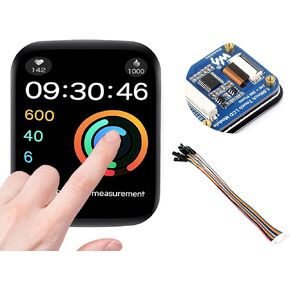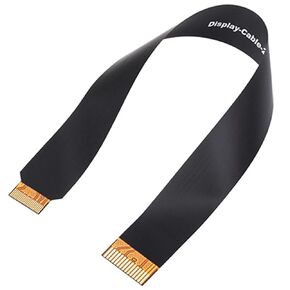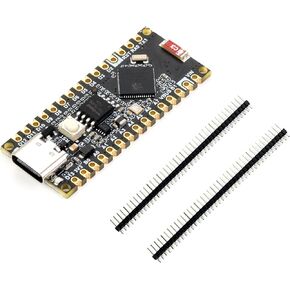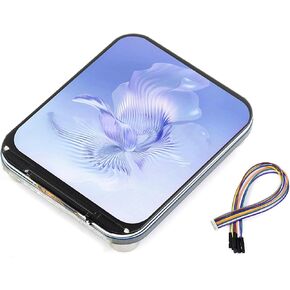- Shopping, made easy.
- /
- Get the app!
Mini PCIe TO M.2 adapter for Raspberry Pi 5, supports NVMe Protocol M.2 solid state drive with high-speed reading/writing, compatible with M.2 solid state drive in 2230 / 2242 size, supports Gen2 and Gen3 modes, and supports booting PI5 from SSD.
Features
1. PCIe To M.2 Mini Adapter, Designed for Raspberry Pi 5, Supports NVMe Protocol M.2 Solid State Drive, High-speed Reading/Writing
2. Connecting to PI5 via 16PIN Cable, Based on 16PIN PCIe Interface of Raspberry Pi 5
3.NVMe Drive Protocol Support. Compatible With 2230/2242 Size M.2 Solid State Drive. Supports Gen2 and Gen3 Modes, Supports Booting PI5 From Solid State Drive
4.Onboard Dual LED Indicators. Easy to monitor the Working Status:
ACT Status Indicator: Keeps blinking while reading/writing.
PWR: Lights up when power-on.
5. Compact size Design, practical and compact, Easily embedded into your projects
Note: As the Raspberry Pi does not support NVME booting, the config text should be modified.
Booting from NVMe SSD
1: First, you can use an SD card to boot the Raspberry Pi, just test it to make sure the hardware can work properly.
2: Use the SD card to boot the Raspberry Pi and modify the config file, modify BOOT_ORDER
3: Reboot the Raspberry Pi, and you can see the following content in serial port log during start-up
4: Flash the system to NVME, and then connect to the board, remove the SD card, and power it on again.
More Online User Manual of Load/Read/Write Test/Auto Mount/Booting from NVMe SSD,etc,please check it: bit.ly/3KrJZzy
Package Content
PCIe TO M.2 MINI x1
16P-Cable-40mm x1
2*3 Pin header x1
Screws pack x1
 Waveshare 1.69inch Touch Round LCD Display Module 240×280 Resolution, IPS Screen 262K Display Color SPI and I2C Communication for Raspberry Pi/Raspberry Pi Pico/ESP32S3/Arduino/STM32
KWD 9.500
Waveshare 1.69inch Touch Round LCD Display Module 240×280 Resolution, IPS Screen 262K Display Color SPI and I2C Communication for Raspberry Pi/Raspberry Pi Pico/ESP32S3/Arduino/STM32
KWD 9.500
 DSI FPC Flexible Cable for Raspberry Pi 5, Pi5 Display Cable for Suitable for DSI Display Screens, 22Pin to 15Pin, 200mm Length,Black EMI Shielding Film, More Stable Signal Transmission
KWD 3.500
DSI FPC Flexible Cable for Raspberry Pi 5, Pi5 Display Cable for Suitable for DSI Display Screens, 22Pin to 15Pin, 200mm Length,Black EMI Shielding Film, More Stable Signal Transmission
KWD 3.500
 ESP32-S3-Nano Microcontroller Development Board, Based on ESP32-S3R8 Chip, Integrates 2.4GHz Wi-Fi and Bluetooth LE Dual-Mode Wireless Communication Compatible with Arduino Nano ESP32
KWD 5.500
ESP32-S3-Nano Microcontroller Development Board, Based on ESP32-S3R8 Chip, Integrates 2.4GHz Wi-Fi and Bluetooth LE Dual-Mode Wireless Communication Compatible with Arduino Nano ESP32
KWD 5.500
 1.83inch Round LCD Display Module 240×280 Resolution IPS LCD SPI Interface 65K Colors Rounded Corners Micro LCD Display for Raspberry Pi 5/4B/ 3B+/Pi3B/Raspberry Pi Zero W/2W, STM32,ESP32 etc.
KWD 6.500
1.83inch Round LCD Display Module 240×280 Resolution IPS LCD SPI Interface 65K Colors Rounded Corners Micro LCD Display for Raspberry Pi 5/4B/ 3B+/Pi3B/Raspberry Pi Zero W/2W, STM32,ESP32 etc.
KWD 6.500